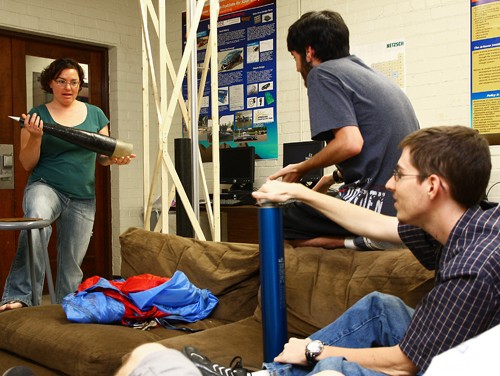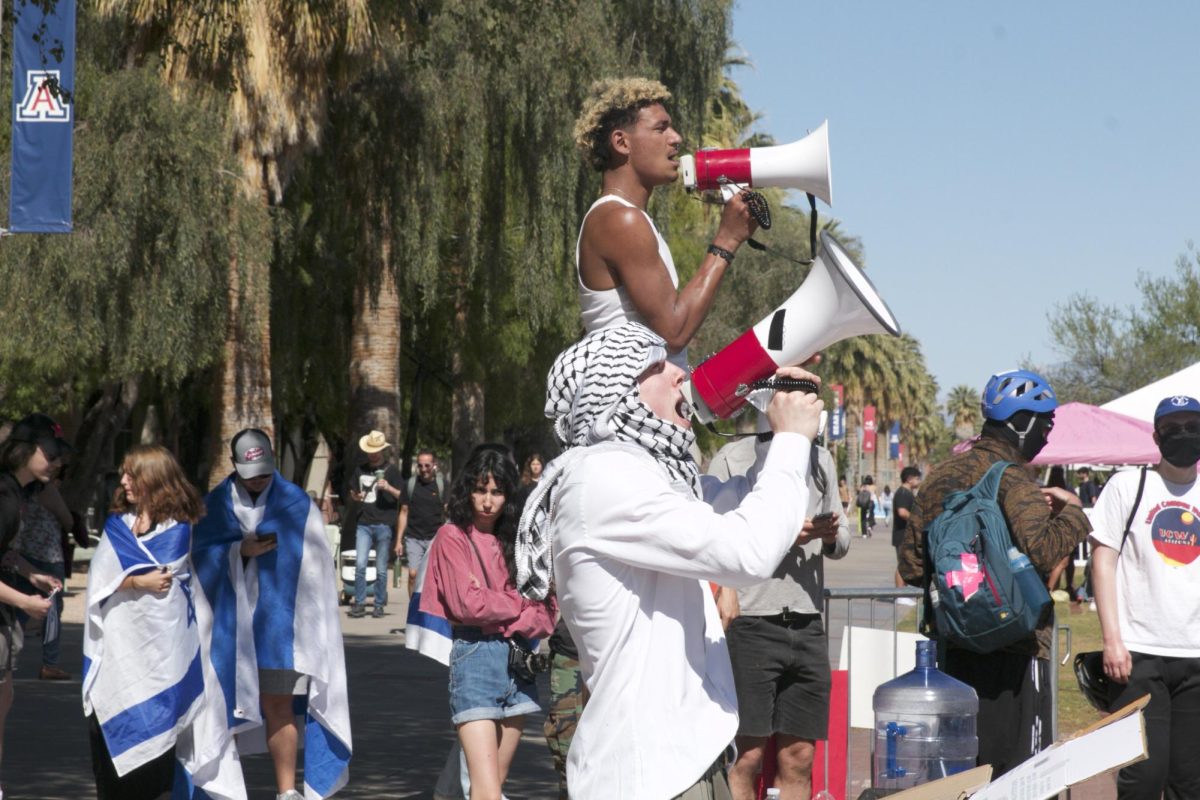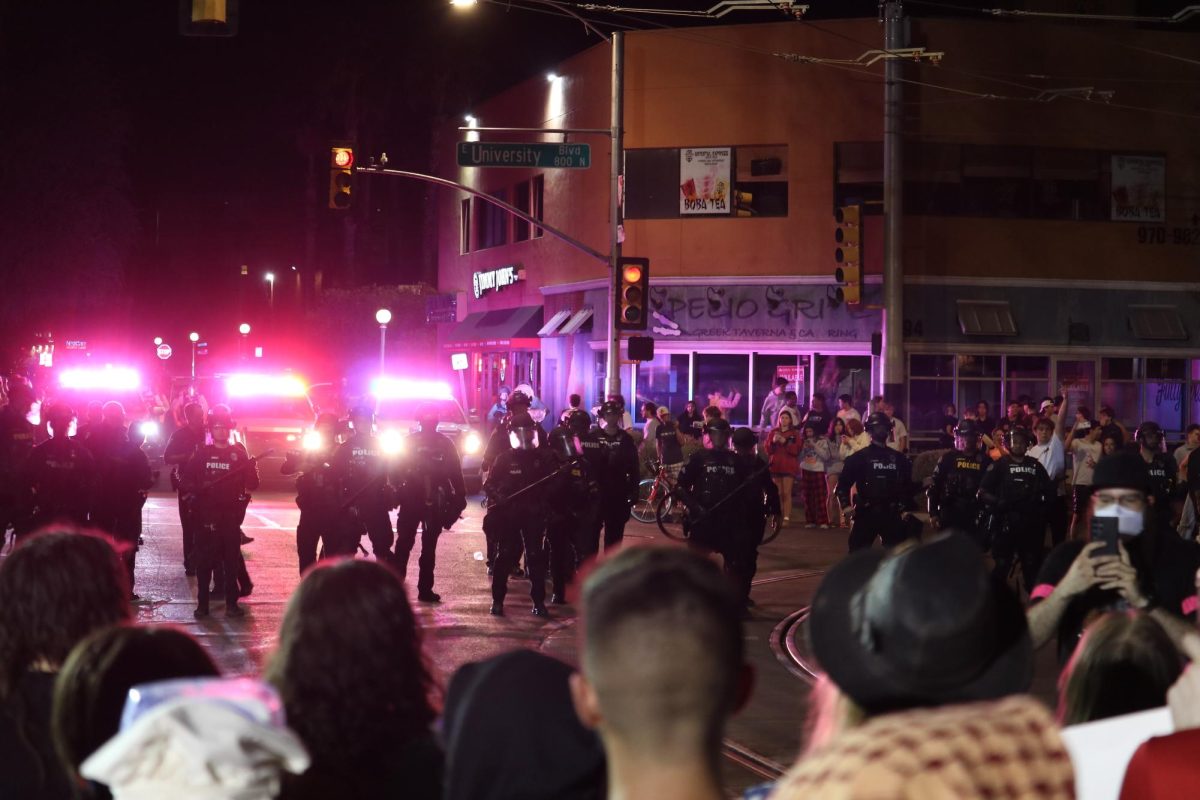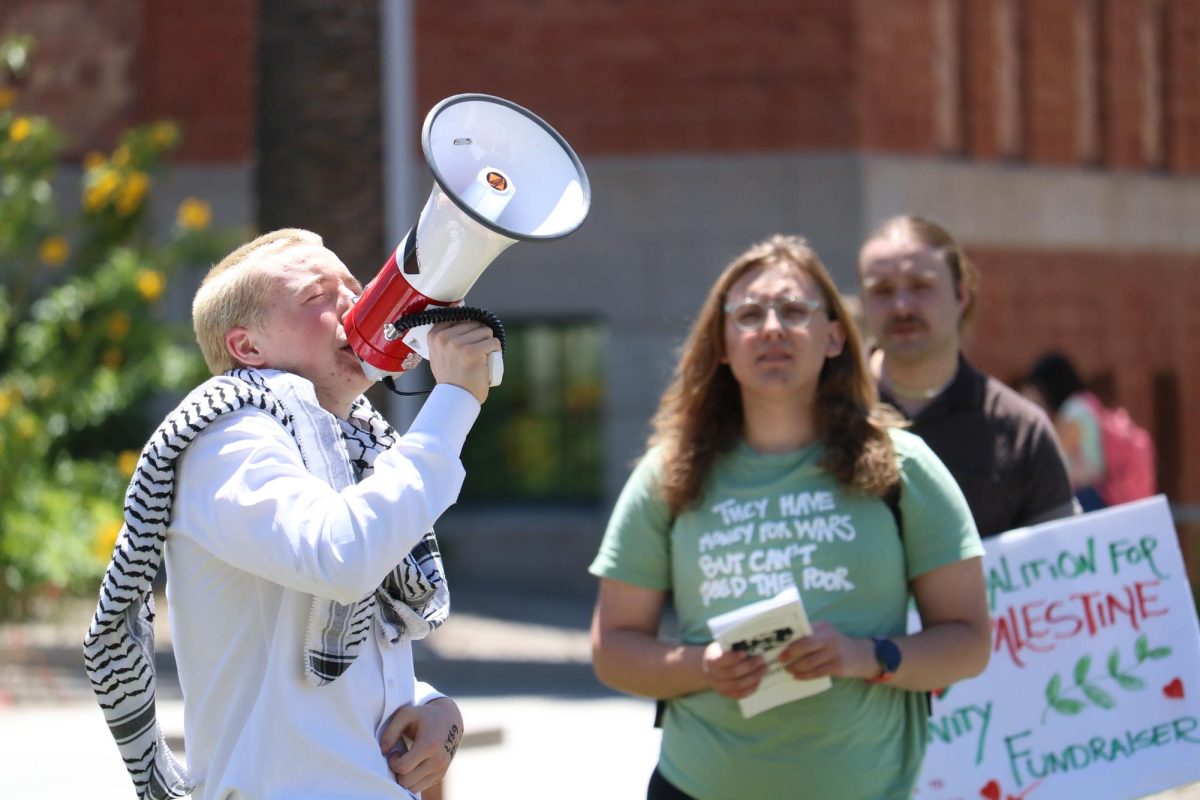Building a rocket was their dream. Now it’s a reality.
The Rockoon Team, a a group of 15 students, is close to test launching a rocket it has been designing and building for the past year and a half.
The rocket is in its final stages, and the team expects to do its test launch at the end of September. Measuring approximately 14-by-14-inches, it also has an 8-foot-tall wooden platform. Carrying eight pounds of fuel, it will have a GPS so that it can be retrieved, as long as it doesn’t “”smash into a million pieces,”” Janet Glenn, recently out of graduate school for materials sciences and engineering, said. The structure is made of carbon fiber, so they don’t anticipate total destruction; but when falling 150,000 feet, anything is possible, the students said.
Out of all other groups alike within the UA, it is the only one to has built its craft’s parts mostly from scratch. As a result, Discovery Channel Canada contacted the group to possibly do a special on the rocket, although nothing has been confirmed.
Two former graduate students lead the mostly junior and senior group. Glenn describes herself as “”the rocket mother.”” With Matt Goodman, now a doctoral student at University of Texas, she started the group to “”teach the undergrads how to do their own engineering project from concept to design, to build, to test, and to launch … to get that going for the next generation of engineers.””
Among the Engineering and Aerospace students, there is Sara Meschberger, a communications and linguistics sophomore.
Meschberger is one of two members with a special rocket launching certification and has been doing this since she was 13. Her dad, a propulsion engineer building rocket motors, led her to a hobby she hopes to turn into a career.
She is part of other teams that have been in space-related conferences as well as other engineering projects.
“”What prevented me from doing engineering was the math,”” she said. Meschberger wants to work as a spokeswoman for a private space industry company, combining her major’s space and astronomy focus with her passion.
“”I think sometimes the skill engineers kind of lack is being able to communicate effectively to other people outside of the engineering community,”” she said.
The group initially got together two years ago to prepare for a one-time competition of the National Students for the Exploration and Development of Space group. The event fell through, but the students kept on their goal to launch a rocket 150,000 feet and recover it.
The Rockoons had difficulty with funding, but they initially paid for the materials needed themselves. The departments of mechanical engineering, physics and the Engineering Student Council are now helping. They also sought private companies’ support, but in return they would lose their full control over the rocket’s design, something they didn’t want.
Like most of his colleagues, Sean Gellenbeck, an aerospace engineering student, wants to work in the field, with his goal being NASA. Gellenbeck was a freshman last year when he joined the group, and to him it’s been priceless experience. “”Most of my (previous) rockets were about the size of the engine on this one.”” Working with a team also helps prepare him for the real world, he said, where you are “”never (working) alone.””
After this project is completed, the group might move on to “”bigger and cooler things, since we like working together so much”” she added. The rocket competition universe is vast, and the group could apply to some of them in the future.
They might also share their findings and work online, as an “”open source”” project making it available to other college students to perfect or to “”inspire them to do other things.”” And as inspiration goes, this could very well be a stepping-stone to a professional rocket-building future for the students in the group.









